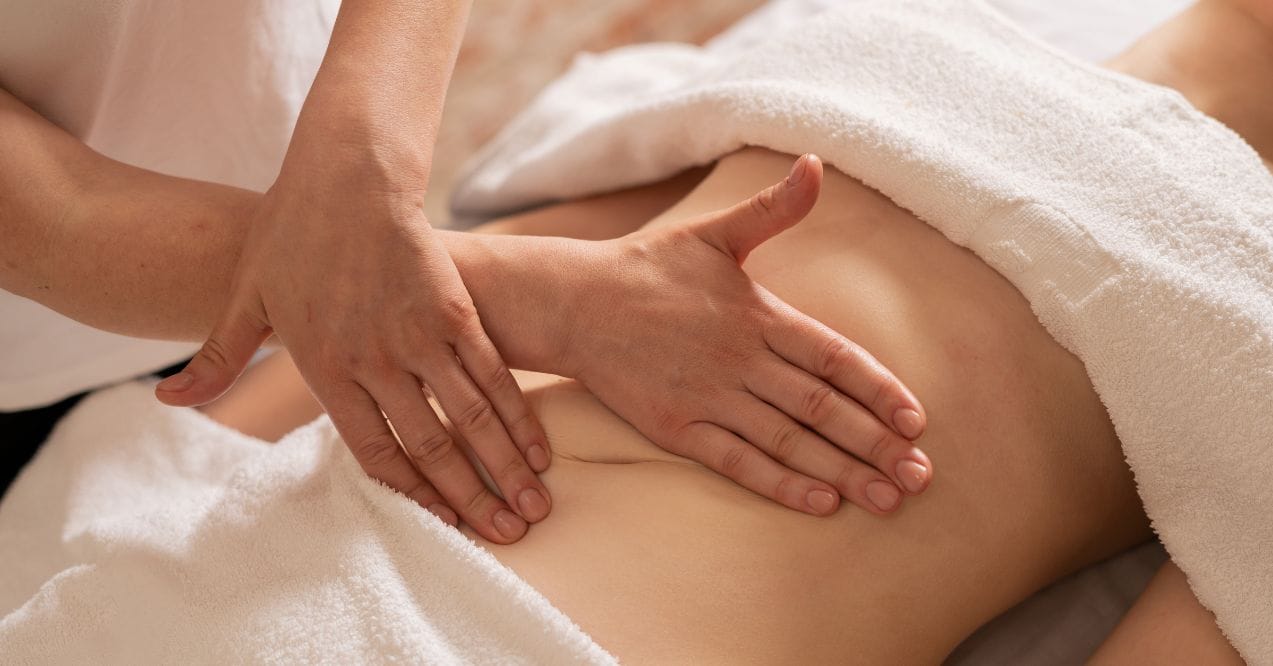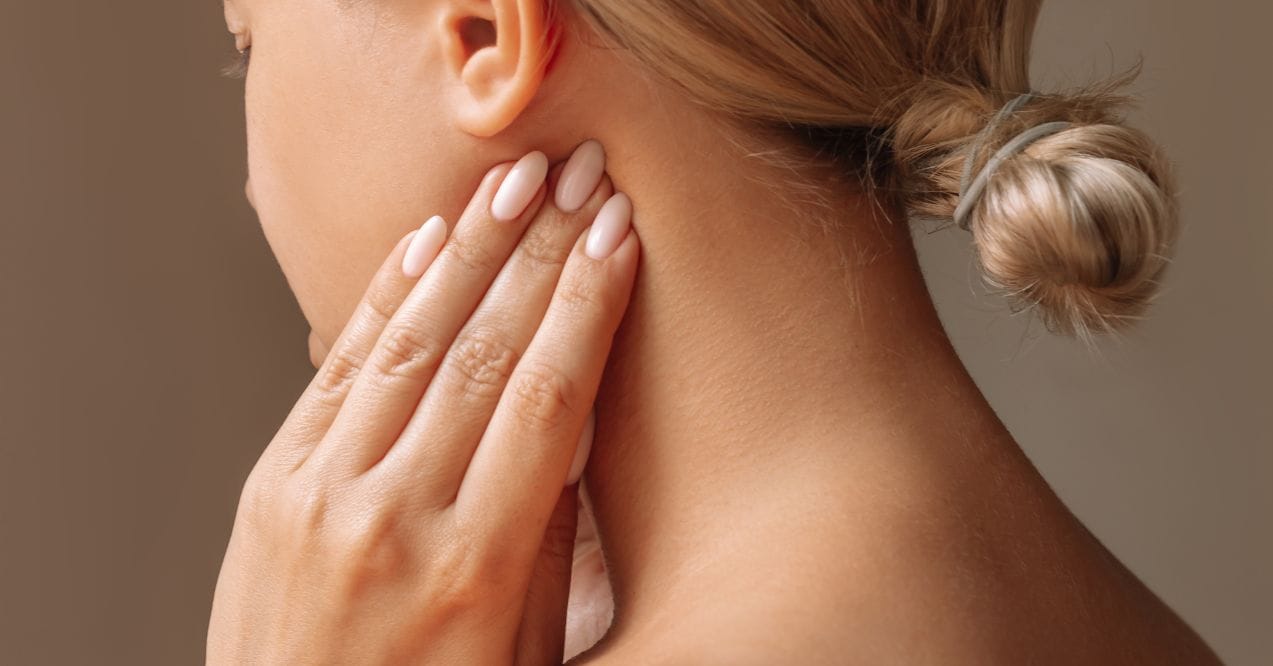What Is Lymphatic Drainage Massage? Benefits and More!
Medically reviewed by our experts


What is lymphatic drainage? This massage technique uses gentle movements to move fluid through your body. The practice encourages lymph fluid to flow through your natural drainage pathways. Research shows it may help reduce swelling for some people.
The Lymphatic System Explained
Your lymphatic system works as your body’s drainage network. It includes lymph nodes, vessels, and organs that move lymph fluid. This clear fluid carries waste products and cellular debris away from tissues.
Lymph nodes filter this fluid as it travels through your body. They trap harmful substances and help with immune function. The system connects with your circulatory system but works differently. Your heart pumps blood, but lymph fluid needs muscle movement to flow.
When drainage slows down, fluid can collect in your tissues. This buildup often shows up in your arms or legs. The extra fluid causes noticeable swelling and discomfort. Your limbs may feel heavy and affect daily activities.
What Is Lymphatic Drainage Massage?
Lymphatic drainage massage differs from traditional deep tissue work. This technique uses light, rhythmic strokes to move lymph fluid. A trained massage therapist applies gentle pressure in specific patterns. These patterns follow your body’s natural lymphatic pathways.
The method focuses on moving lymph fluid, not working deep muscles. Sessions involve slow, repetitive movements across your skin’s surface. These drainage techniques redirect trapped fluid back into your lymphatic vessels. The fluid can then circulate properly through your system.
Only professionals with specific training should perform these sessions. Certified lymphedema therapists complete extensive education in anatomy and lymphatic function. They assess each person’s needs before starting treatment. Their approach adapts based on individual conditions and health status.
Manual Lymph Drainage (MLD)
Manual lymph drainage represents the most common professional approach. Therapists use their hands to create gentle pumping motions. The pressure stays light and works only on surface tissues. It doesn’t reach deeper muscle layers like regular massage.
Each stroke follows a specific direction toward lymph nodes. The therapist starts where your lymphatic system drains naturally. They then work outward from those areas. This sequence creates space for fluid to move from congested areas.
Deep Breathing and Other Techniques
Deep breathing plays a role in lymphatic function. When you breathe deeply, your diaphragm moves up and down. This creates pressure changes in your chest and abdomen. These pressure shifts may help push lymph fluid through vessels.
Therapists often combine breathing exercises with manual techniques. Some suggest dry brushing or gentle stretching between sessions. These practices work alongside professional massage. They may help your lymphatic system function throughout the day.
Benefits of Lymphatic Drainage Massage
Research shows several potential advantages of this gentle therapy. Studies indicate it may reduce pain and swelling in people with lymphedema. The technique appears most effective when combined with compression garments and movement exercises.
Many people report feeling lighter and more comfortable after sessions. The massage may improve skin appearance by reducing puffiness. Some practitioners suggest it helps with natural detoxification processes. More research would strengthen these claims about broader benefits.
Blood flow may improve in treated areas. This could benefit tissue health over time. The gentle movements might help move stagnant fluid and waste products. For those with persistent swelling, regular sessions might offer relief. Working with trained professionals who understand lymphatic anatomy matters most.
For Post-Surgical Recovery
People recovering from procedures involving lymph node removal often develop lymphedema. This happens most after treatment for malignant cell growth in breast tissue. When surgeons remove lymph nodes, remaining pathways struggle to drain fluid effectively.
Studies show manual lymph drainage may help manage this swelling. Clinical guidelines often recommend it for post-surgical care. The therapy works best when started early and continued regularly. Professional guidance helps maintain fluid balance in affected areas.
For General Wellness
Some wellness practitioners recommend lymphatic massage for broader health benefits. Claims include better immune function, more energy, and improved skin appearance. The scientific evidence remains limited for these general wellness applications.
The therapy may offer relaxation benefits similar to other gentle massages. People without medical conditions might enjoy the soothing experience. They may notice some skin improvements as well. However, research focuses mainly on lymphedema management, not general wellness effects.
Who Can Benefit and Who Should Avoid It
Several groups may find this therapy helpful. People with chronic fluid buildup in their limbs often see results. Those experiencing swelling after surgical procedures may benefit from professional sessions. This applies especially to procedures involving lymph node removal.
People with chronic venous insufficiency might notice better circulation. Some with inflammatory arthropathy find the gentle approach more comfortable. Anyone with persistent swelling should consult healthcare providers first. This helps identify underlying causes before starting treatment.
Certain conditions make this therapy inappropriate. People with acute infections should wait until fully recovered. Those with blood clots need medical clearance before any bodywork. People with severe heart or kidney issues should discuss risks first.
Active malignant cell growth in treatment areas requires special consideration. Therapists avoid massaging directly over affected tissues. They also avoid areas receiving radiation therapy. Pregnant women and those with thyroid issues should seek medical guidance.
What to Expect During a Session
Sessions typically last between 30 and 60 minutes. Your therapist will ask about your health history and current concerns. They’ll explain the process and answer your questions beforehand.
You’ll rest on a massage table in a quiet room. The therapist uses only their hands without oils or lotions. The touch feels very light, almost like gentle skin stretching. It doesn’t feel like traditional massage pressure at all.
Most people find the experience relaxing and pleasant. You might feel slight tingling or warmth as fluid moves. After your session, wearing compression garments may help maintain results. This prevents fluid from pooling again in treated areas.
Scientific Evidence and Current Research
Clinical studies provide the strongest evidence for lymphedema management. Multiple research reviews confirm manual lymph drainage can reduce swelling. The evidence looks solid for post-surgical applications. This applies especially when lymph nodes have been removed or damaged.
Research shows combining massage with compression therapy and exercise works best. Pain scores often improve alongside physical measurements in trials. The combined approach produces better outcomes than any single method.
However, evidence for broader wellness claims remains less clear. Studies examining general detoxification show mixed or unclear results. The therapy appears safe for most people without contraindications. Scientific backing focuses on specific medical applications, not general health promotion.
More research would clarify optimal treatment frequency and long-term outcomes. Scientists continue investigating which techniques work best for different conditions. The field benefits from ongoing studies. These examine how lymphatic massage fits into comprehensive care approaches.
Supporting Your Lymphatic System Between Sessions
Professional massage sessions offer focused care for your lymphatic system. However, what you do between appointments matters too. Your daily habits can influence how well your lymphatic system functions.
Staying well-hydrated helps lymph fluid move more easily through your body. Regular movement and gentle exercise encourage natural drainage. Getting adequate rest allows your body to complete its natural processes. These lifestyle factors work together with professional treatments.
Some people also explore supplements for lymphatic system health as part of their wellness routine. Certain nutrients may help fluid balance and circulation. When combined with massage therapy and healthy habits, these supplements might complement your care plan. Always discuss new supplements with your healthcare provider before starting them.
The most effective approach typically combines multiple strategies. Professional sessions provide targeted treatment. Daily habits and appropriate supplements may help maintain the benefits. This comprehensive approach gives your lymphatic system consistent attention throughout the week.
Conclusion
Lymphatic drainage massage offers a gentle approach to managing fluid buildup. The technique shows promise for people with lymphedema. It may also help those recovering from surgical procedures. While the massage requires specialized training, it may provide relief.
The broader wellness claims need more scientific validation. Anyone considering this therapy should consult healthcare providers first. Working with certified practitioners ensures proper technique and appropriate application.
The therapy may work after recovery, but timing matters. Professionals avoid massaging active treatment areas or tissues receiving radiation therapy. Always consult your care team before starting sessions. They’ll ensure safety based on your specific treatment plan.
Frequency depends on your individual needs and condition severity. People with lymphedema might need several sessions weekly at first. Frequency decreases as swelling improves. Those seeking general wellness typically schedule monthly sessions. Your certified therapist can recommend an appropriate schedule.
Simple self-massage techniques exist for home use. Professional instruction matters though. A certified lymphedema therapist can teach you safe movements. Self-massage works best as a supplement to professional sessions. This applies especially for managing medical conditions.
No strong evidence backs using this therapy for weight loss. The massage may reduce fluid retention and temporary bloating. It doesn’t burn fat or change body composition. Any weight changes reflect temporary fluid shifts, not actual fat loss. Think of it as a wellness tool, not weight management.
Lymphatic drainage uses much lighter pressure than traditional massage. Regular massage works deep muscle tissue to release tension. Lymphatic techniques focus on surface-level skin movements. They follow specific drainage pathways throughout your body. The goals differ too, with lymphatic massage targeting fluid movement.
FAQ
References
